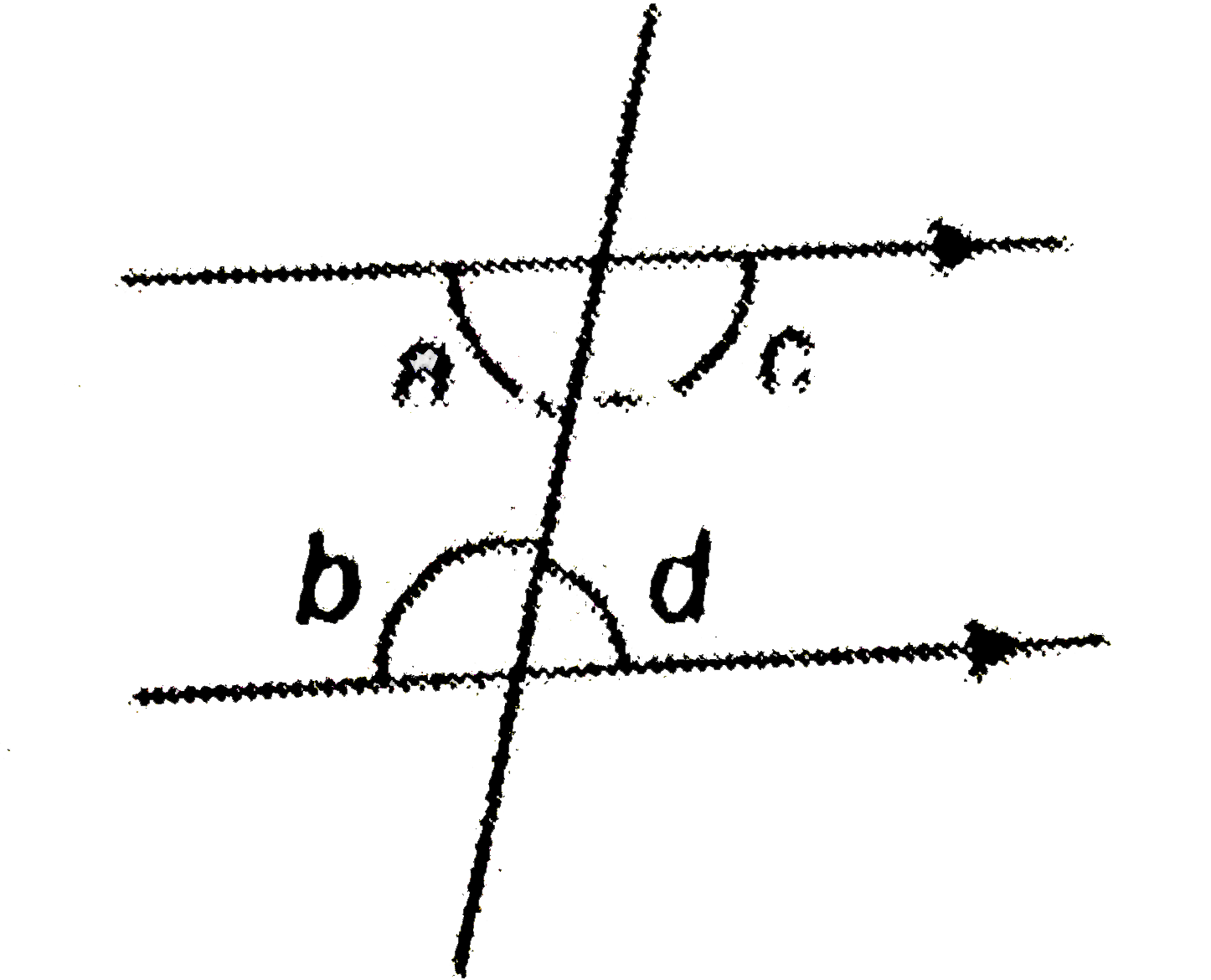The lengths of the sides CB and CA of a triangle ABC are given by a and b and the angle C is 2π3. The line CD bisects the angle C and meets AB at D. Then the length of CD is : (a) 1a+b (b) a2+b2a+b (c) ab2(a+b) (d) aba+b
1a+b
a2+b2a+b
ab2(a+b)
aba+b
The correct Answer is:D
To find the length of the angle bisector CD in triangle ABC, where CB=a, CA=b, and ∠C=2π3, we can use the angle bisector theorem and some trigonometric properties.
1. Draw the Triangle:
- Sketch triangle ABC with CB=a, CA=b, and ∠C=2π3.
- Mark the angle bisector CD which divides ∠C into two equal angles of π3.
2. Use Cosine Rule:
- We can find the lengths of the segments AD and DB using the angle bisector theorem, which states that:
ADDB=CACB=ba
- Let AD=k and DB=m. Then, we have:
km=ba⟹k=bam
3. Express Total Length AB:
- The total length AB can be expressed as:
AB=AD+DB=k+m=bam+m=m(ba+1)=m(b+aa)
- Thus, we can express m as:
m=AB⋅ab+a
4. Find Length of Angle Bisector CD:
- The formula for the length of the angle bisector CD is given by:
CD=2aba+b⋅cos(C2)
- Since C=2π3, we have:
C2=π3
- Therefore, cos(π3)=12.
5. Substitute Values:
- Substituting the values into the angle bisector formula gives:
CD=2aba+b⋅12=aba+b
6. Final Result:
- Thus, the length of CD is:
CD=aba+b
Conclusion:
The correct option is (d) aba+b.
- Sketch triangle ABC with CB=a, CA=b, and ∠C=2π3.
- Mark the angle bisector CD which divides ∠C into two equal angles of π3.
- We can find the lengths of the segments AD and DB using the angle bisector theorem, which states that:
ADDB=CACB=ba
- Let AD=k and DB=m. Then, we have:
km=ba⟹k=bam
- The total length AB can be expressed as:
AB=AD+DB=k+m=bam+m=m(ba+1)=m(b+aa)
- Thus, we can express m as:
m=AB⋅ab+a
- The formula for the length of the angle bisector CD is given by:
CD=2aba+b⋅cos(C2)
- Since C=2π3, we have:
C2=π3
- Therefore, cos(π3)=12.
- Substituting the values into the angle bisector formula gives:
CD=2aba+b⋅12=aba+b
- Thus, the length of CD is:
CD=aba+b
The correct option is (d) aba+b.
Topper's Solved these Questions
- SOLUTION OF TRIANGLESBOOK - VK JAISWAL ENGLISHCHAPTER - SOLUTION OF TRIANGLESEXERCISE - Exercise-2 : One or More than One Answer is/are Correct
14 Videos
- SOLUTION OF TRIANGLESBOOK - VK JAISWAL ENGLISHCHAPTER - SOLUTION OF TRIANGLESEXERCISE - Exercise-3 : Comprehension Type Problems
12 Videos
- SEQUENCE AND SERIES BOOK - VK JAISWAL ENGLISHCHAPTER - SEQUENCE AND SERIES EXERCISE - EXERCISE (SUBJECTIVE TYPE PROBLEMS)
21 Videos
- STRAIGHT LINES BOOK - VK JAISWAL ENGLISHCHAPTER - STRAIGHT LINES EXERCISE - Exercise-5 : Subjective Type Problems
10 Videos
Similar Questions
Knowledge Check
If A, B, C, D and E are points in a plane such that line CD bisects ∠ACB and line CB bisects right angle ∠ACE, then ∠DCE =
A22.5∘B45∘C575∘D67.5∘
The sides AB and AC of a triangle ABC are produced, and the bisectors of the external angles at B and C meet at P. Prove that if AB>AC, then PC>PB.
View SolutionIn triangle ABC,∠C=2π3andCD is the internal angle bisector of ∠C meeting the side AB at D. If Length CD is 1, then H.M. of aandb is equal to : (a) 1 (b) 2 (c) 3 (d) 4
View SolutionIn a triangle ABC, D is a point on BC such that AD is the internal bisector of ∠A. Let ∠B=2∠C and CD = AB. Then ∠A is
View SolutionABC is a right triangle right-angled at A and AD⊥BC . Then, BDDC= mm (a) (ABAC)2 (b) ABAC (c) (ABAD)2 (d) ABAD
View SolutionFactorise : ab(c2+d2)−a2cd−b2cd
View SolutionD and E are points on the sides CA and CB respectively of a triangle ABC right angled at C. Prove that AE2+BD2=AB2+DE2 .
View SolutionD and E are points on the sides CA and CB respectively of a triangle ABC right angled at C. Prove that AE2+BD2=AB2+DE2.
View Solution

